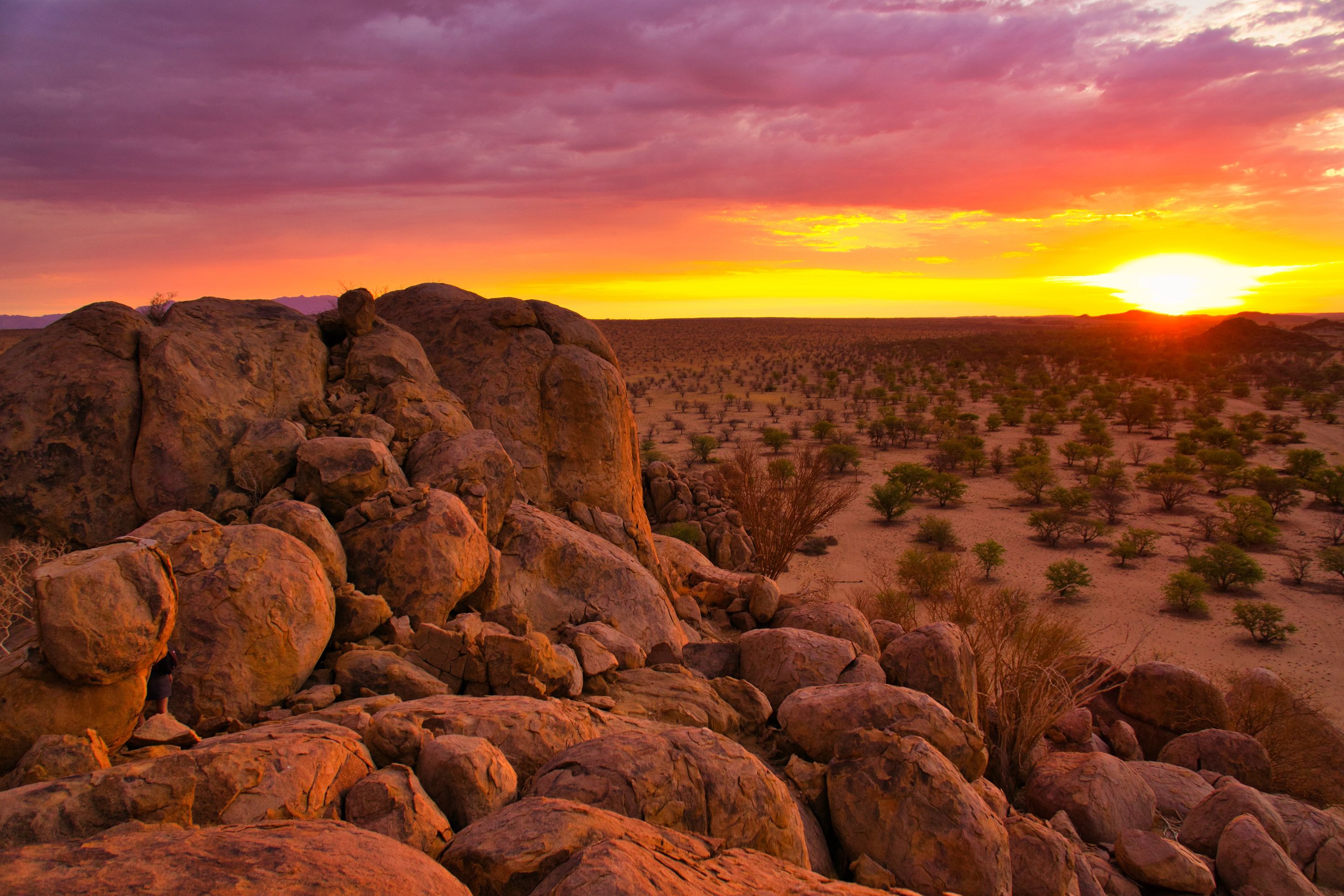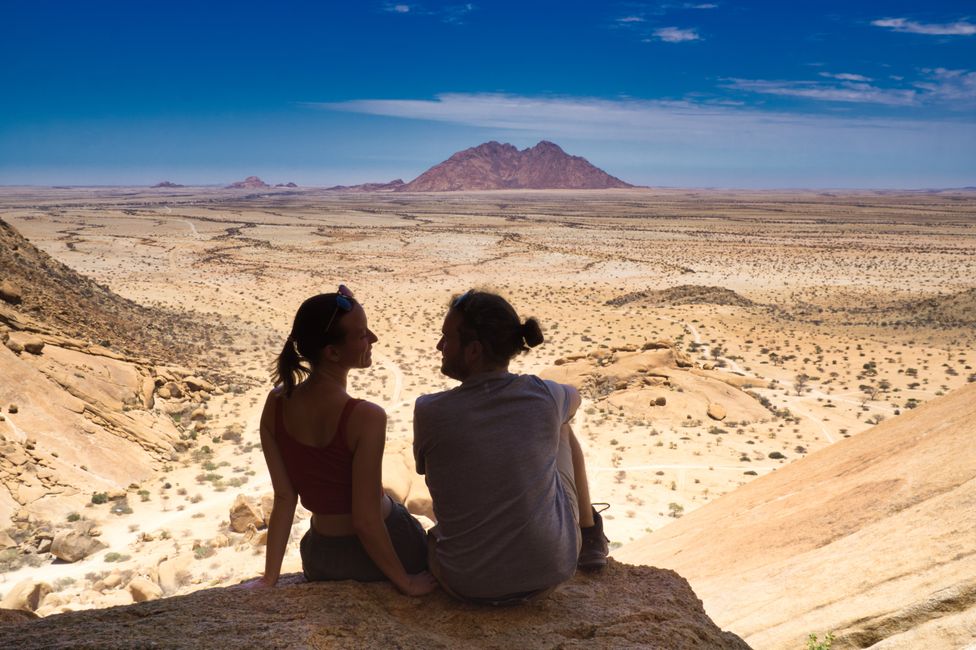Swakopmund
Weşandin: 29.11.2021
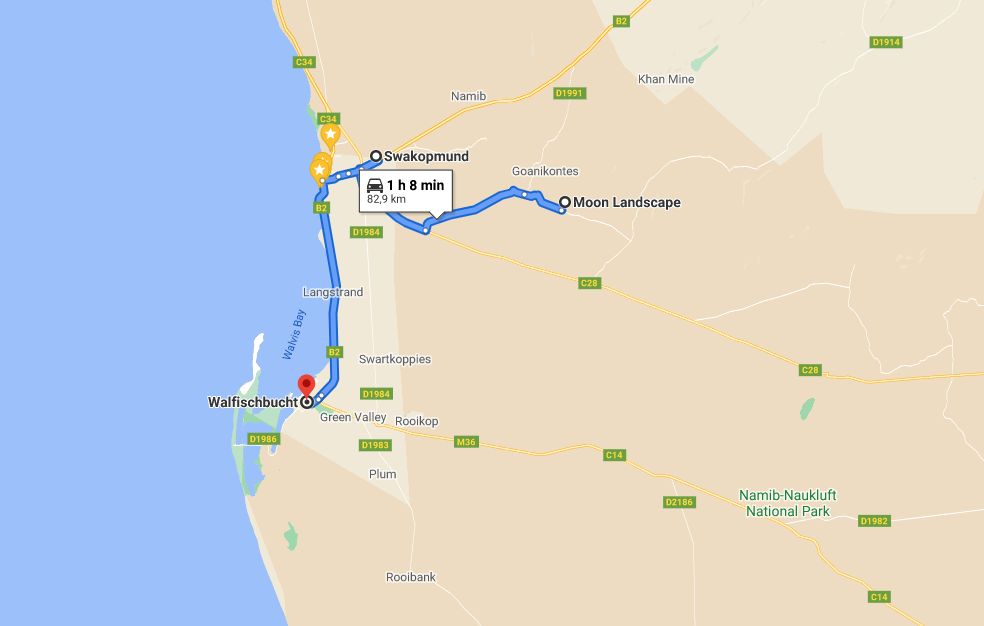
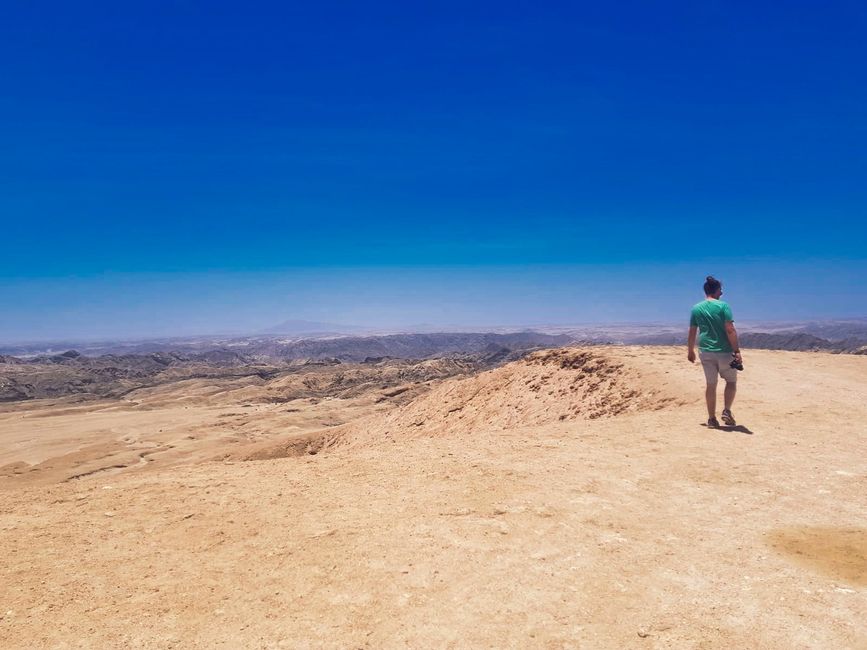
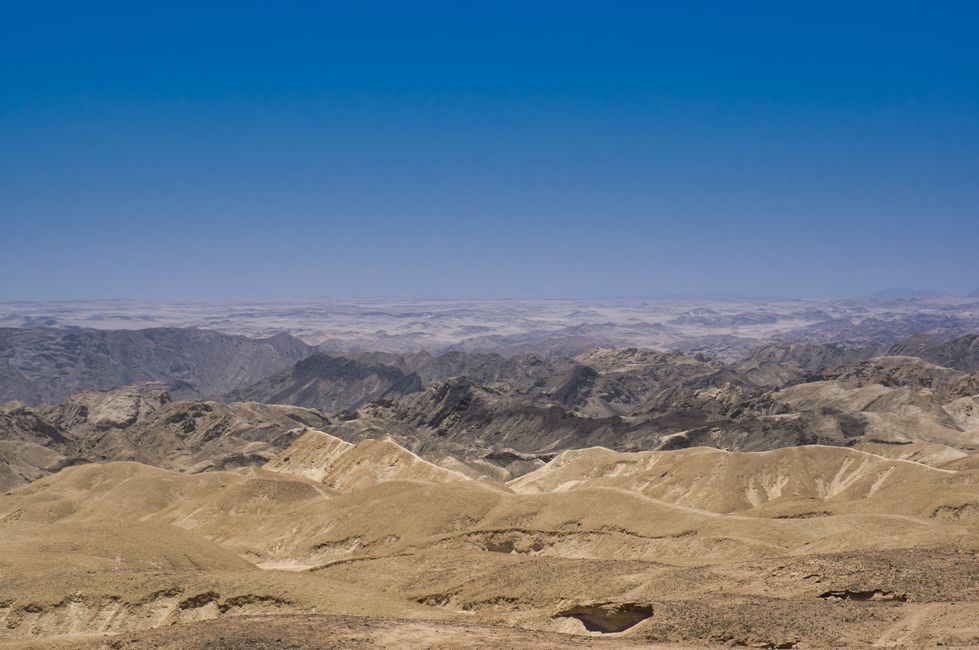
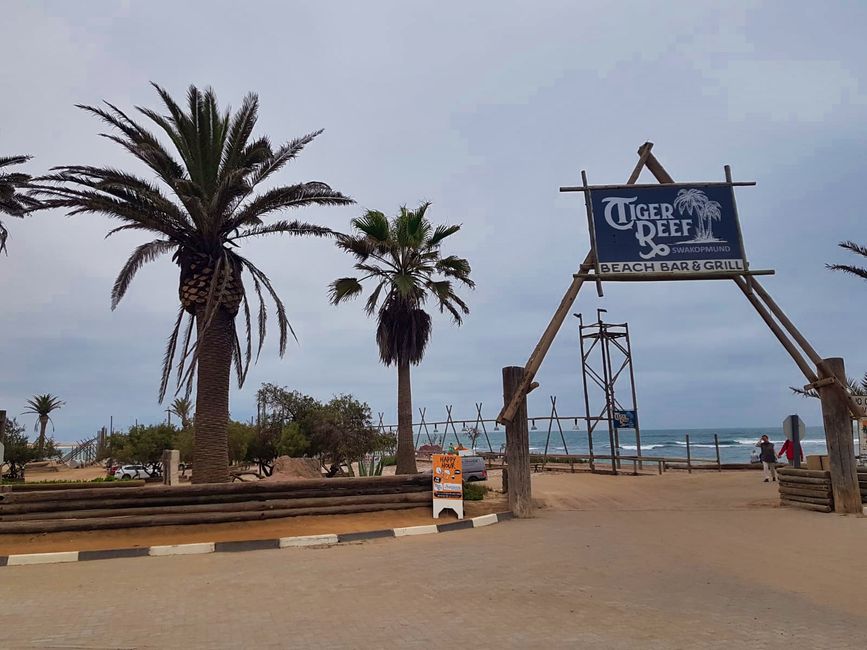
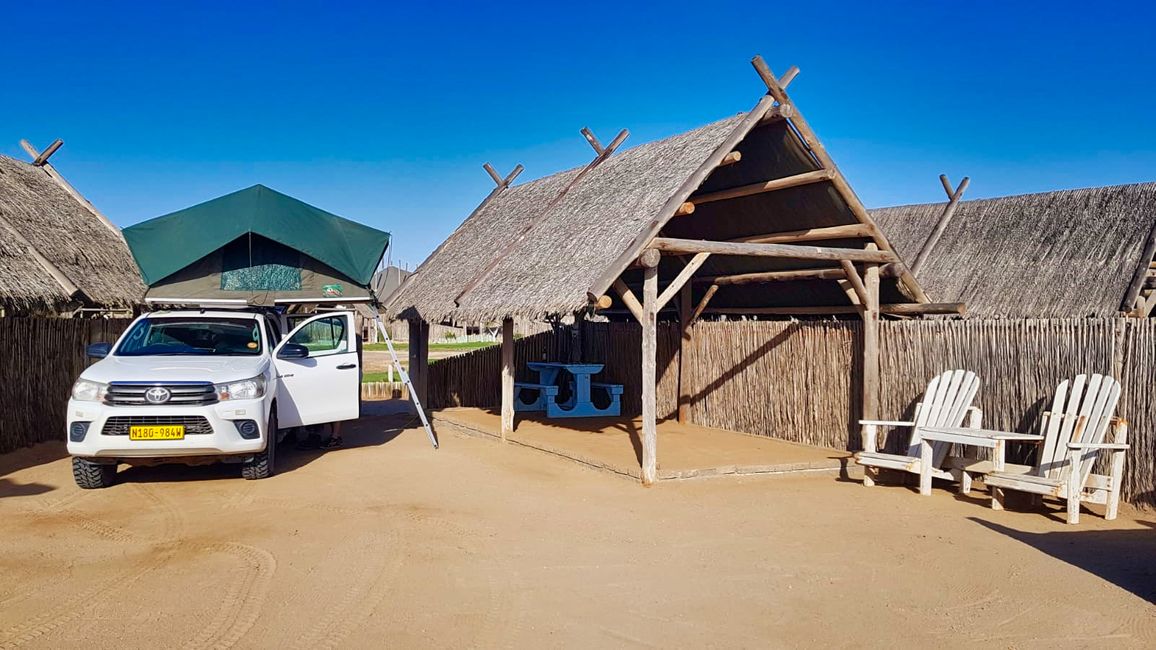
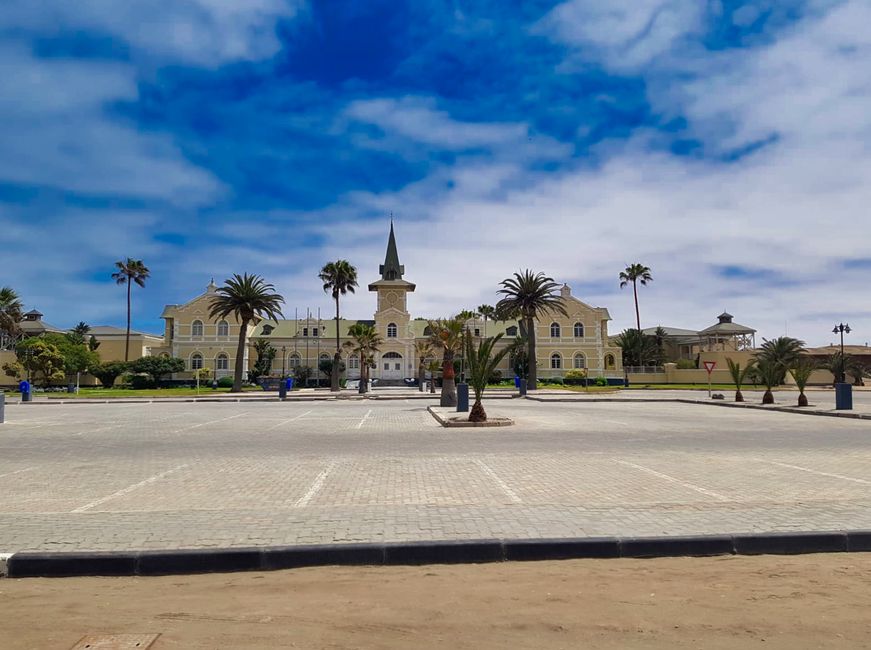
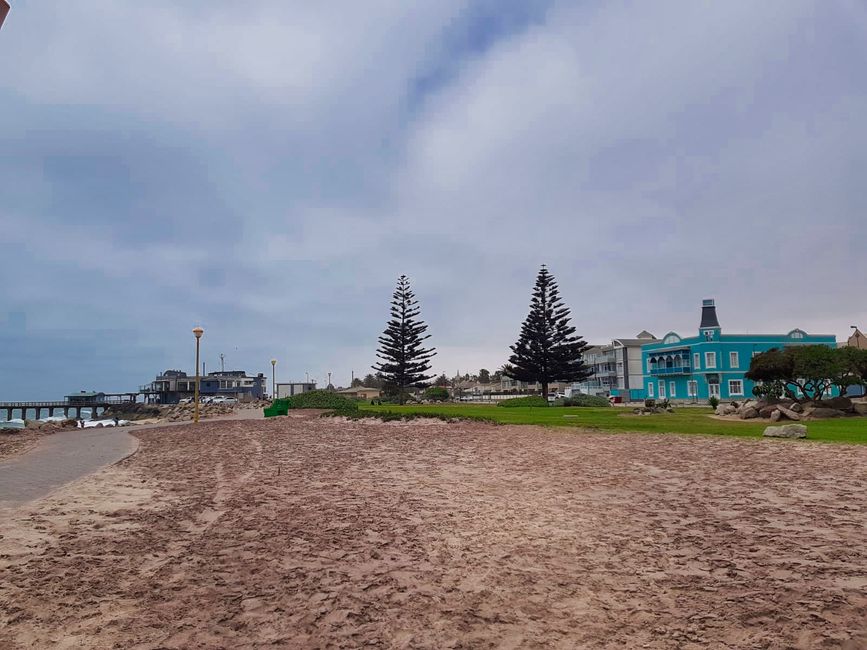
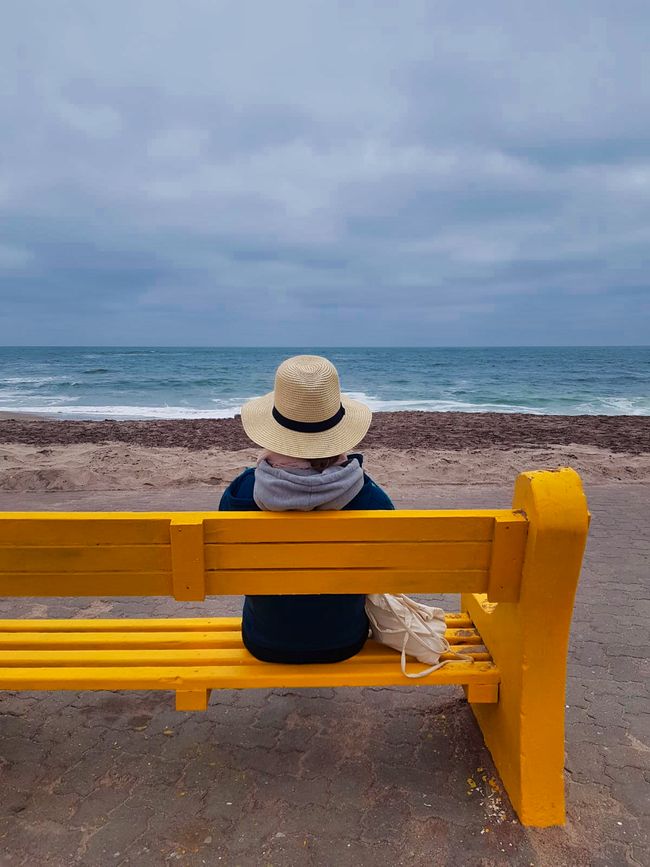
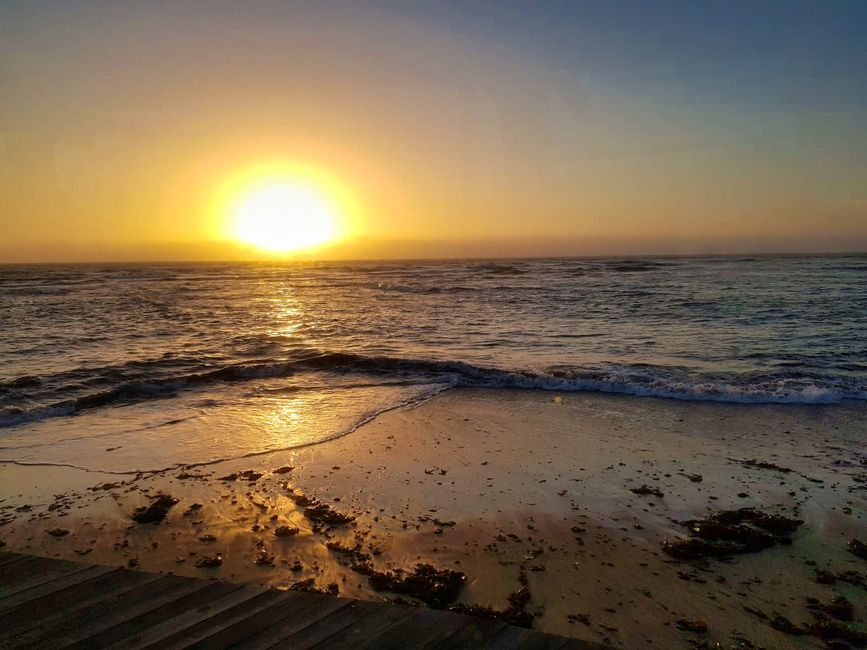
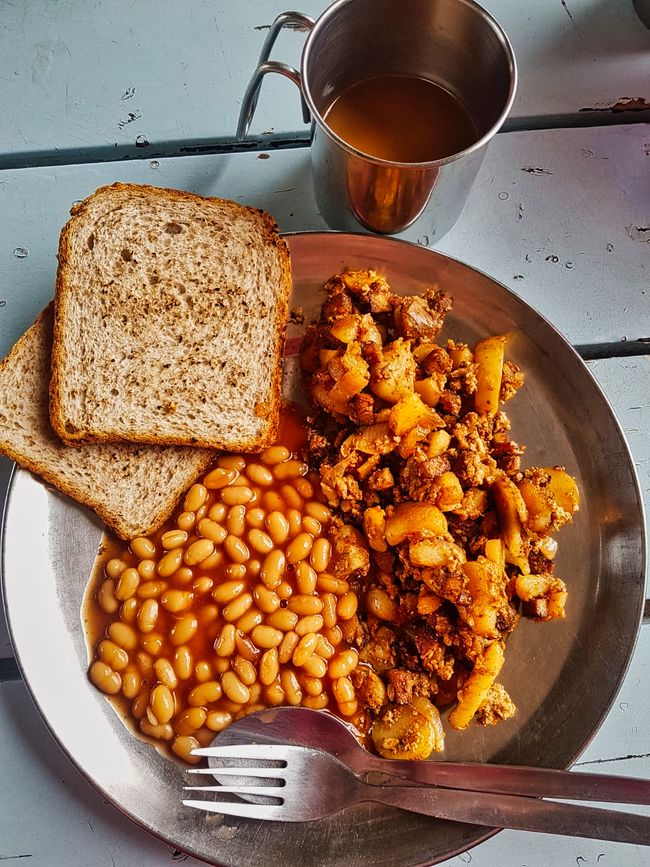
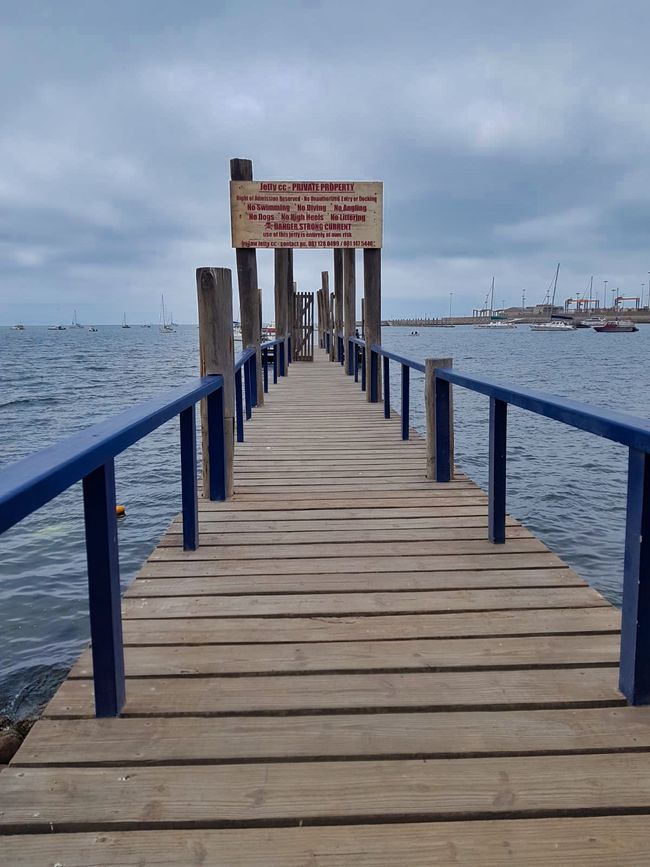
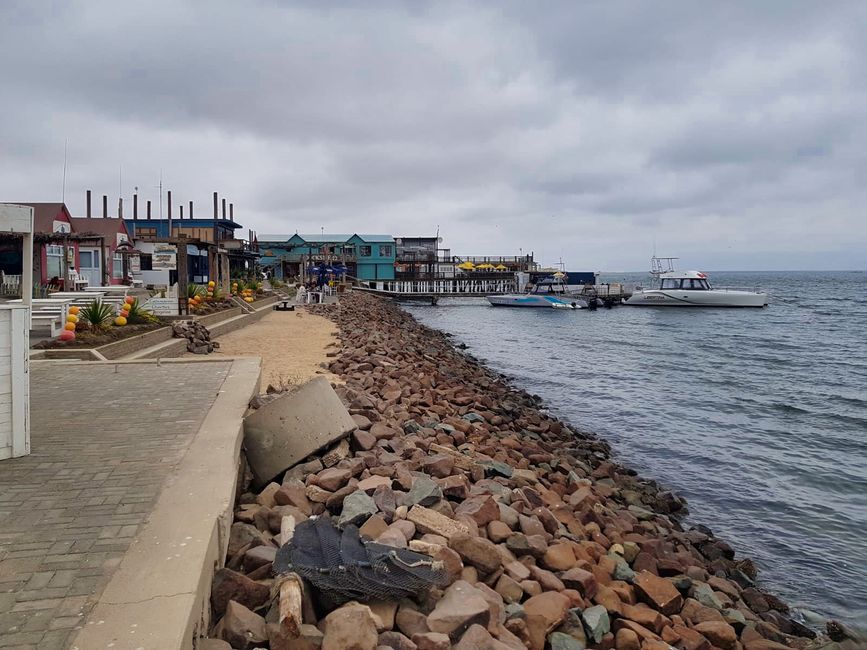
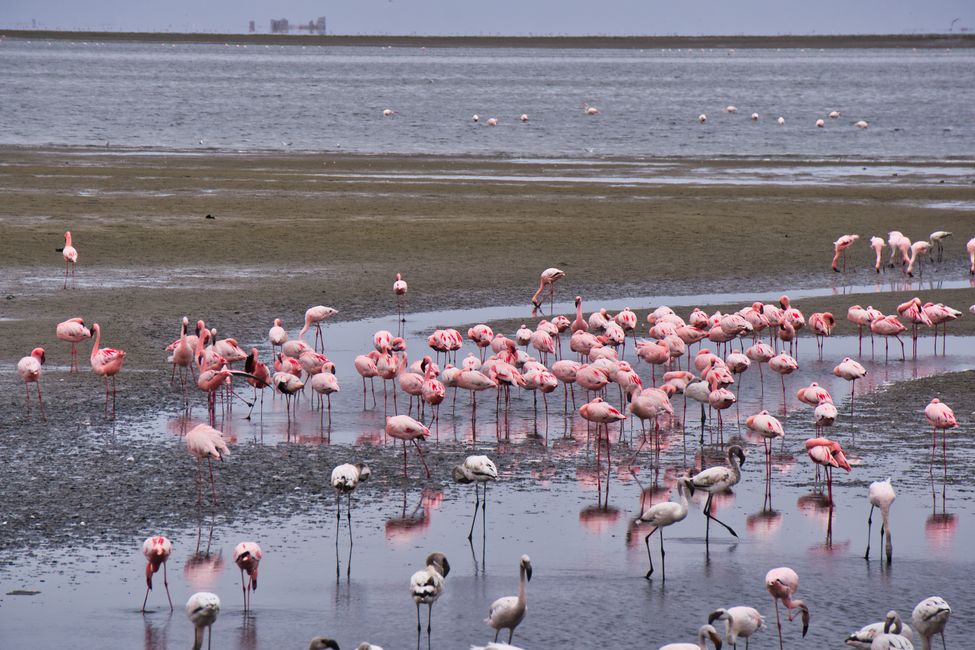
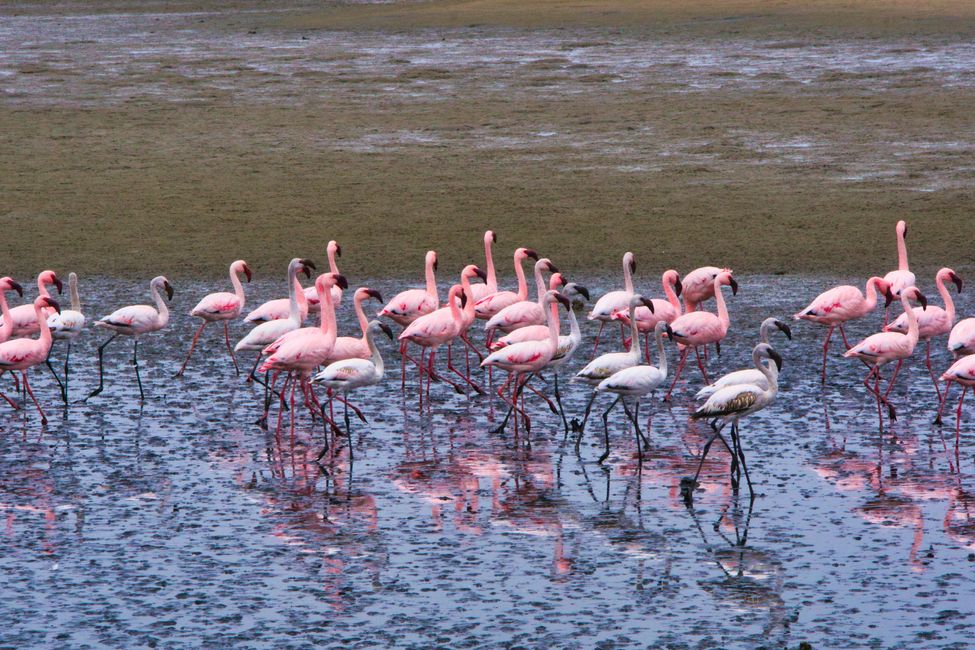
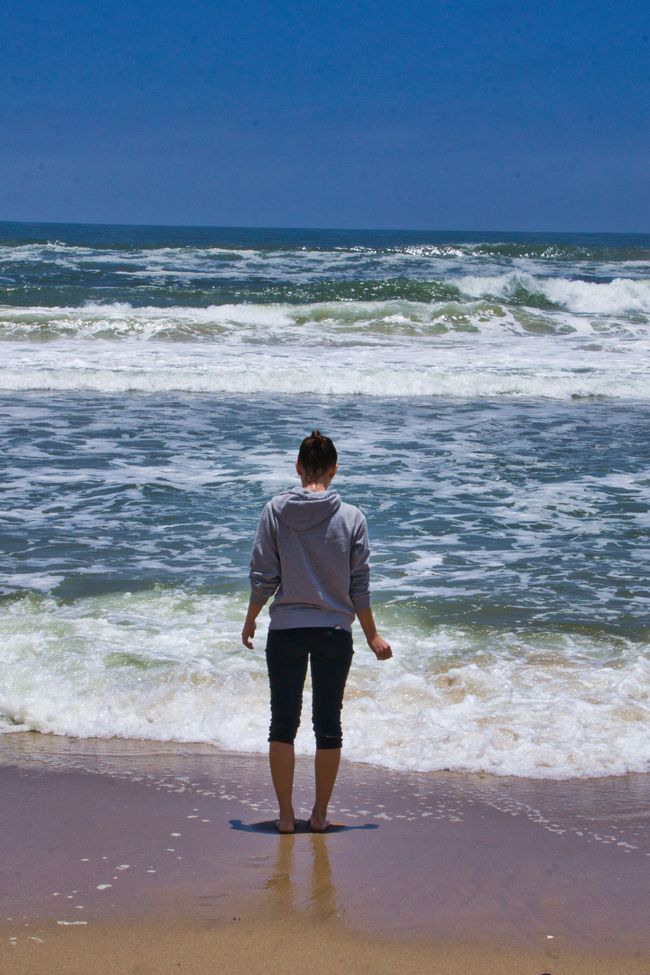
Subscribe to Newsletter
Moon LandscapeOn the way to Swakopmund we make a short detour to the so-called Moon Landscape. As far as the eye can see, rugged, rocky hills line up one after the other. A gust of wind sweeps the sand through the barren landscape. The vegetation-free hills and valleys actually resemble a real lunar landscape or simply the surface of an alien planet. Where there used to be large mountain ranges, the Swakop River has carved out a unique rock landscape from the mountain massif. A small gravel path leads off the main road to a viewpoint. The landscape is very low, so you have an unusual view from above of the many hills. Hard to believe that just a few kilometers from this dry, hot landscape the wide, rough Atlantic awaits us.
Maxi and I are not historians, but during our last trip here we at least dealt a little with our historical heritage after realizing significant gaps in our knowledge (- why don't we learn anything about German colonial history in school?!).
Therefore, here is a brief introduction to the history of Namibia in case there are more ignorant people out there:
Although we enjoy being able to walk on safe streets without being constantly approached and not having to fend off a seller of tourist souvenirs that all look the same every two meters, we can't really appreciate the city itself. Spending a few days here is nice, but honestly, that's enough for us.
Our campsite, Tiger Reef Campsite, is beautifully located on the Atlantic Ocean and in the associated bar right by the sea, you can enjoy a fantastically beautiful sunset. The shopping opportunities are also very good - finally oat milk again, hooray! - and in the surrounding area, you can book many activities such as sandboarding in the dunes or even skydiving. Nevertheless, it still seems a bit strange to us on the second day, so we are happy to be able to escape into the vast landscape of the Namib-Naukluft National Park after a few nights here.Subscribe to Newsletter
Bersiv
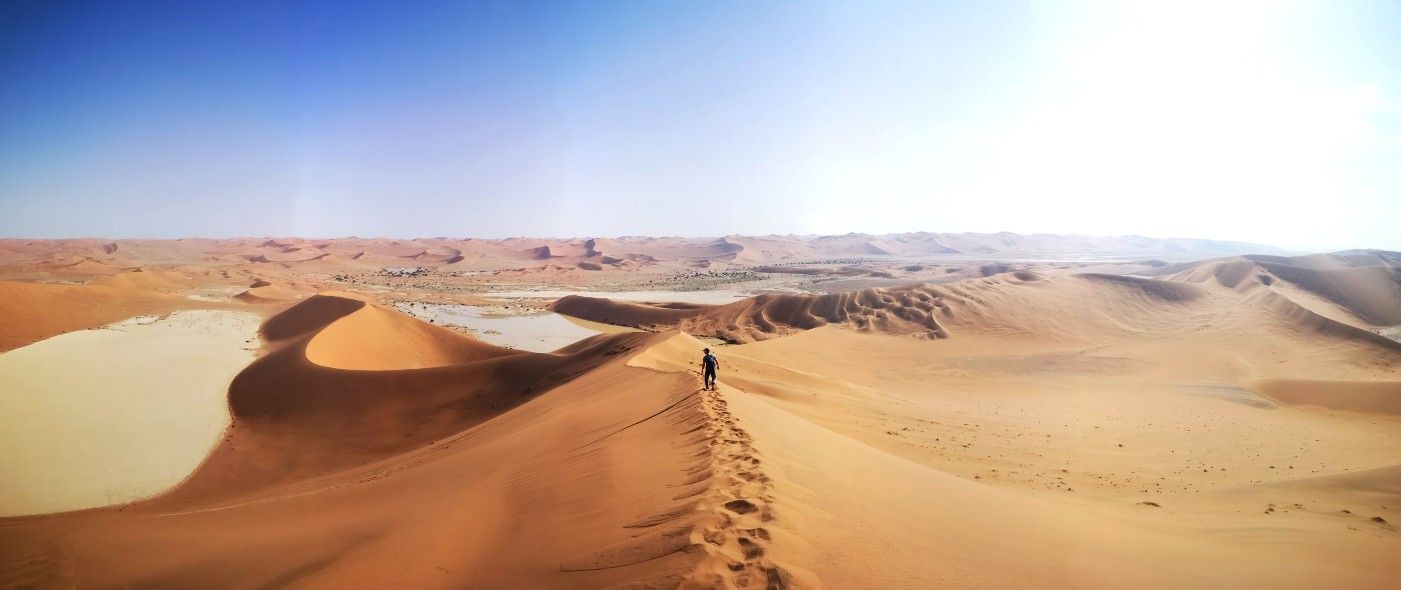
Raporên rêwîtiyê Namîbya
